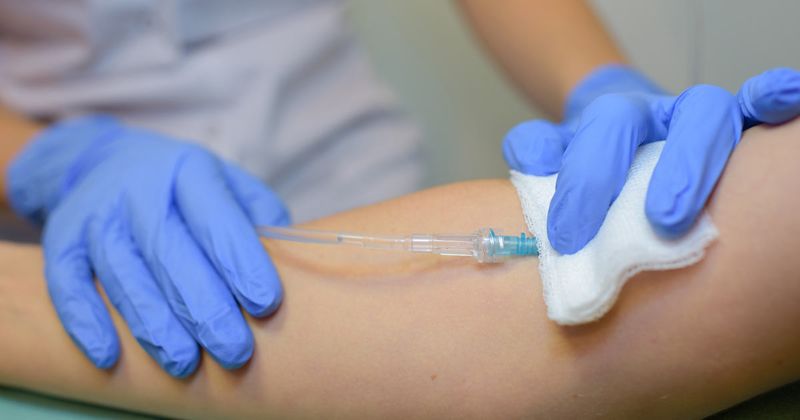COVID-19 lockdown lowered infection rates among patients with primary immunodeficiencies
LOUISVILLE, Ky. — Patients with primary immunodeficiency disease experienced fewer infections during the COVID-19 lockdown, according to a presentation at the American College of Allergy, Asthma & Immunology Annual Scientific Meeting.
These observed reductions may be due to isolation and/or fewer interactions with physicians, Marie Sanchirico, PhD, senior medical director of rare immunology at Takeda Pharmaceuticals USA, said during her presentation.

“Primary immunodeficiencies [PID] can arise from over 450 inborn errors of immunity, and patients with PID often suffer from severe infections, both chronic and recurrent, and require hospitalizations,” Sanchirico said.
Immunoglobulin replacement therapy (IgRT) has been the standard first-line treatment for most forms of PID, Sanchirico continued, although real-world data about the clinical and treatment characteristics of patients starting IgRT has been limited.
The researchers used the Merative MarketScan Research Databases to analyze administrative claims records of patients with PID who initiated Ig 10% infusion treatment between July 1, 2012, and Aug. 31, 2019.
“Patient data was examined for 6 months prior and after their first Ig 10% claim, and we examined their demographic, clinical and treatment characteristics and health care resource utilization,” Sanchirico said.
The main study population comprised 1,497 patients (67.1% female; mean age, 43.4 years; standard deviation, 21), with 1,327 patients (88.6%) receiving Ig 10% intravenously.
“Prior to starting Ig 10%, patients in our study had a high burden of comorbidities,” Sanchirico said, adding that many of these comorbidities were related to PID.
These comorbidities included asthma (32%); weight loss, nausea, loss of appetite and chronic diarrhea (31%); hypothyroidism (18%); COPD (10%); eczema (9%); and thrombocytopenia (9%), among others.
Also, 21% of these patients received their Ig 10% from an allergist or immunologist, 20% from heath care facilities or agencies and 13% from primary care physicians. “Other providers” provided Ig 10% treatments for 32% of patients, with 14% of providers listed as “unknown or missing.”
Infection diagnoses consistently decreased from 6 months before Ig 10% initiation to 6 months afterward, including severe (20% to 12%) and any (79% to 69%) infections, as well as respiratory (46% to 34%), ear/sinus (44% to 34%), skin (13% to 12%), urinary (8% to 7%), gastrointestinal (7% to 6%), blood/sepsis (6% to 4%) and other (28% to 22%) infections.
Noting evidence in the literature indicating that influenza and respiratory infection rates decreased in 2020 during the COVID-19 lockdown, the researchers extended the study period to also include data from March 1, 2020, to Dec. 31, 2020.
“When we compared rates of infection diagnoses during March through December of 2019 vs. March through December of 2020, we found a 0.73-fold decrease,” Sanchirico said.
Between March 1, 2019, and Dec. 31, 2019, 31% of patients reported an infection. During the lockdown period of March 1, 2020, to Dec. 31, 2020, 23% of patients reported an infection.
This decrease may be due to COVID-19 mitigation efforts such as isolation and/or decreased reporting to physicians, Sanchirico said.
The proportions of patients who had PID and infection diagnoses 6 months before and after initiating Ig 10% treatment were similar for the pre-lockdown and lockdown periods, the researchers found.
However, the researchers said these similarities could be due to most patients in the study being indexed more than 6 months before the lockdown, preventing any impact on overall diagnosis rates.
Overall, researchers noted decreases for all-cause and infection-related (P < .001) inpatient admissions and ED visits after patients started Ig 10% treatment.
But there were slight increases in all-cause outpatient visits (P = .033) and pharmacy use, Sanchirico said, suggesting a shift in care from the inpatient to the outpatient setting after initiation of Ig 10% treatment.
In conclusion, the researchers noted the high burden of infection and comorbidities experienced by patients with PID prior to IgRT. Also, the researchers said, patients may benefit from early referrals to specialists to optimize care.
Furthermore, infection rates fell once Ig 10% was initiated, the researchers continued, with claims falling by a factor of 0.73 during the lockdown compared with the same period the previous year, possibly due to COVID-19 mitigation efforts.









